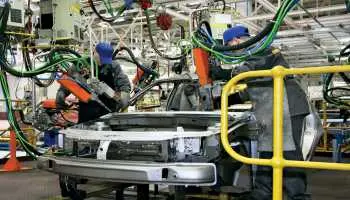
North America Pharmacy Automation Market Share, Trends, Revenue, CAGR Status, Business Challenges, Opportunities and Future Strategies Till 2033: SPER Market Research
Category :
Pharmaceutical
Published: May-2023
Author: SPER Analysis Team
North America Pharmacy Automation Market Share, Trends, Revenue, CAGR Status, Business Challenges, Opportunities and Future Strategies Till 2033: SPER Market Research
North America Pharmacy Automation Market is projected to be worth USD XX billion by 2033 and is anticipated to surge at a CAGR of XX%.
Automation in the pharmaceutical context refers to the use of technology and robotics to improve and streamline certain procedures. It includes a variety of solutions, including robotic prescription filling, automated dispensing systems, drug management systems, inventory control systems, and automated packaging systems for medications. By decreasing errors and human labour, pharmacy automation seeks to increase precision, efficiency, patient safety, and drug adherence. Pharmacies may streamline processes, increase medication safety, and boost operational effectiveness by automating tasks including prescription dispensing, inventory control, and medicine packing.
North America Pharmacy Automation Market Driving Factors and Challenges
The rise and implementation of pharmacy automation in North America are fuelled by a number of factors. Increasing Prescription Volume is one of this industry's main development drivers. The need for pharmacy automation is driven by the increasing demand for prescription drugs brought on by reasons including an aging population, chronic diseases, and greater access to healthcare services. Higher prescription volumes can be efficiently handled by automation solutions, which also reduces manual errors and increases workflow productivity. Prescription filling, inventory control, and medicine packing are among the activities that pharmacy automation streamlines. By automating these processes, pharmacies can increase workflow effectiveness, decrease waiting times, and boost operational productivity, allowing them to successfully serve more patients.
Request For Free Sample Report @ https://www.sperresearch.com/report-store/north-america-pharmacy-automation-market.aspx?sample=1
However, the North America pharmacy automation market has additional difficulties that could limit its development and uptake. The pharmacy sector is subject to strict regulatory obligations, such as those pertaining to controlled substance management, patient privacy, and drug tracking. These requirements must be followed by pharmacy automation systems, which can make them more difficult to deploy and use. Also, systems for automating pharmacies need constant upkeep, updates, and technical assistance. To address any system problems, software bugs, or equipment malfunctions quickly, it is essential to guarantee the availability of trained employees and rapid customer assistance. Automated systems' capacity to operate without interruption can be hampered by a lack of technical experience or long support wait times.
Impact of COVID-19 on North America Pharmacy Automation Market
The North American pharmacy automation market has suffered greatly as a result of the COVID-19 outbreak. The introduction of automation technologies has been prompted by the rising demand for pharmacy services, the emphasis on contactless transactions, and better pharmaceutical safety. The pandemic also increased the use of online pharmacies, emphasizing the necessity for automation in tele pharmacy and mail-order pharmacies. Pharmacies made investments in automation technologies to improve supply chain optimization and address inventory management challenges. The ability of pharmacies to handle larger prescription volumes and preserve patient care continuity was made possible by pharmacy automation, which was crucial in preserving operational efficiency and resilience during the pandemic. Overall, the pandemic boosted the adoption of pharmacy automation, influencing the market's growth and underlining its significance in healthcare settings.
North America Pharmacy Automation Market Key Players:
The market study provides market data by competitive landscape, revenue analysis, market segments and detailed analysis of key market players such as; AmerisourceBergen Corporation, Asteres Inc., Capsa Healthcare, Cerner Corporation, Fullscript, Innovation Associate, InterLink AI, Inc., McKesson Corporation, MedAvail Technologies, Inc., Omnicell, Inc., RxSafe, LLC, ScriptPro LLC, Universal Logistics Holdings, Inc.
For More Information about this Report @ https://www.sperresearch.com/report-store/north-america-pharmacy-automation-market.aspx
North America Pharmacy Automation Market Segmentation:
By Product: Based on the Product, North America Pharmacy Automation Market is segmented as; Services, Software, System.
By Pharmacy Type: Based on the Pharmacy Type, North America Pharmacy Automation Market is segmented as; Chain, Federal, Independent.
By Pharmacy Size: Based on the Pharmacy Size, North America Pharmacy Automation Market is segmented as; Large Size Pharmacy, Medium Size Pharmacy, Small Size Pharmacy.
By Application: Based on the Application, North America Pharmacy Automation Market is segmented as; Drug Dispensing and Packaging, Drug Storage, Inventory Management.
By End User: Based on the End User, North America Pharmacy Automation Market is segmented as; Central Fill/Mail Order Pharmacies, Inpatient Pharmacies, Online Pharmacies, Outpatient Pharmacies, Pharmacy Benefit Management Organizations, Retail Pharmacies, Others.
By Distribution Channel: Based on the Distribution Channel, North America Pharmacy Automation Market is segmented as; Direct Tender, Third Party Distributor.
By Region: This report also provides the data for key regional segments of Canada, Mexico, United States and rest of North America.
This study also encompasses various drivers and restraining factors of this market for the forecast period. Various growth opportunities are also discussed in the report.
Would you like to view the sample pages?
Get Sample PagesExplore Related Reports
Domains Served
Our Global Clients
Our data-driven insights have influenced the strategy of 200+ reputed companies across the globe.




































